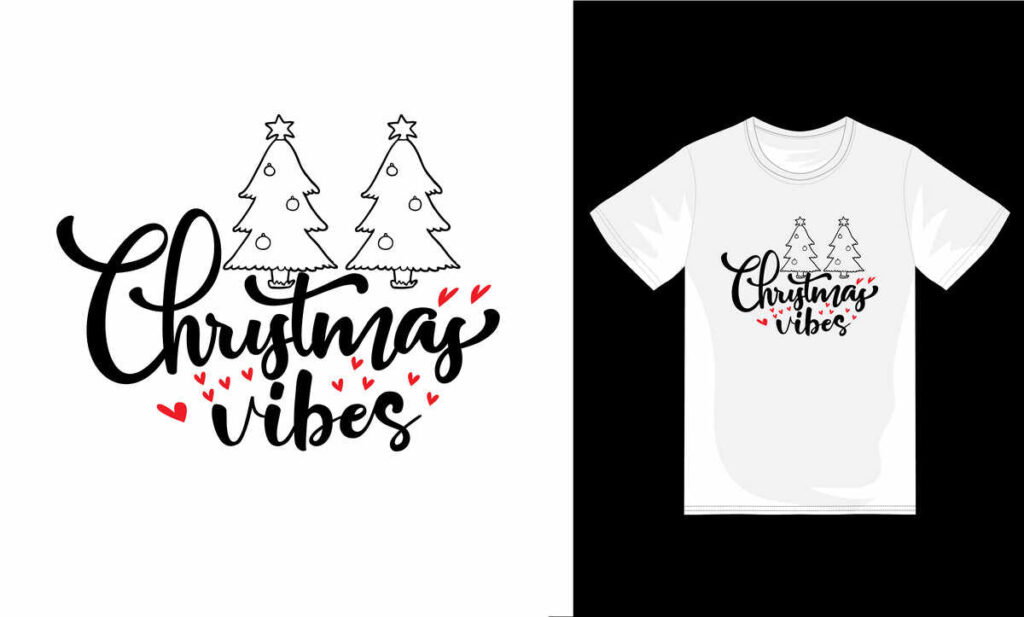DTF printing, or Direct-to-Film printing, is revolutionizing the textile industry with its unique ability to transfer stunning, complex designs onto various fabrics. This innovative technology utilizes a special film to print designs, which are then heat-transferred onto materials, allowing for vibrant colors and intricate details that surpass traditional methods. As businesses seek efficient and cost-effective solutions for custom apparel, DTF printing emerges as a frontrunner, offering significant advantages like quality and sustainability. With a rising focus on sustainable printing practices, DTF technology aligns perfectly with the modern consumer’s demand for eco-friendly production methods. This article explores the fascinating insights surrounding DTF technology, emphasizing its transformative role in textile printing and its implications for the future of fashion.
Direct-to-Film technology is reshaping the landscape of textile production, particularly in the realm of custom apparel. This advanced printing method allows for a seamless transfer of detailed graphics onto fabrics, making it an attractive choice for designers and manufacturers alike. As the demand for personalized products surges, DTF printing stands out for its efficiency and superior output quality. In a market increasingly focused on sustainable practices, this technology not only meets aesthetic needs but also considers environmental impact. By embracing DTF solutions, companies can stay ahead of the curve in textile innovation and consumer satisfaction.
Understanding Direct-to-Film (DTF) Technology
Direct-to-Film (DTF) technology is revolutionizing the textile printing industry with its ability to deliver high-quality, intricate designs efficiently. By utilizing a specialized film, this method enables designers to transfer vibrant graphics onto various fabrics, including demanding materials such as dark textiles. Unlike traditional screen printing, which often requires multiple setups and can be limited in color range, DTF printing provides a simplified process that enhances design freedom and detail. This not only allows for creative flexibility but also ensures that the final product showcases true colors and sharp details, fostering a new standard in custom apparel production.
Moreover, DTF technology is notable for its versatility. It can be applied to a wide range of fabric types, making it suitable for different apparel segments, including sportswear, casual clothing, and promotional items. As demand for personalized apparel increases, DTF printing positions itself as an essential method that can meet this need without sacrificing quality. The implications of DTF technology extend beyond just aesthetics; they’re reshaping how fashion brands approach production, supply chains, and customer engagement.
The Rise of DTF Printing in Custom Apparel
In recent years, the DTF printing market has witnessed remarkable growth, propelled primarily by the surge in demand for custom apparel. As consumers increasingly seek personalized clothing options, businesses are adapting to meet these evolving preferences. DTF technology offers a compelling solution, allowing for on-demand printing that can cater to individual tastes without incurring the high costs typically associated with traditional methods. This capability is particularly beneficial to small and medium-sized enterprises (SMEs) looking to break into competitive markets.
Additionally, the rise of e-commerce has further fueled the popularity of DTF printing. Online platforms enable businesses to offer unique designs directly to consumers, reducing the need for large inventories and facilitating small run production. As these shifts redefine how apparel is produced and marketed, DTF technology remains at the forefront, empowering brands to engage better with customers through personalized experiences while streamlining operational efficiency.
Sustainable Printing Practices with DTF Technology
Sustainability is a crucial consideration for the modern textile industry, and DTF printing is making significant strides in this area. Unlike traditional methods that often rely on harmful inks and extensive waste, DTF printing utilizes eco-friendlier inks which are less toxic and contribute to a more sustainable production process. This shift resonates well with consumers who prioritize sustainability in their purchasing decisions, making DTF technology not only a practical choice but also a socially responsible one.
Additionally, DTF printing minimizes resource waste by allowing for precise color application and reducing excess material, which is a frequent issue in conventional fabric printing. As businesses increasingly focus on adopting sustainable practices, DTF technology stands out as an innovative solution that aligns with these values. This commitment to eco-friendliness not only enhances brand reputation but also prepares companies to meet future regulatory demands for sustainability in manufacturing.
Technological Innovations Supporting DTF Printing
The ongoing evolution of DTF printing is greatly supported by continuous technological advancements that enhance its capabilities. Recent developments in ink formulations have introduced superior adhesion properties, providing durability and wash resistance that were previously challenging to achieve in textile printing. These innovations allow businesses to produce high-quality apparel that maintains its vibrancy and detail even after numerous washes, satisfying customer expectations for longevity and performance.
Moreover, upgrades in printer technology have expanded the range of materials that can be effectively printed using DTF methods. With the ability to accommodate various fabric types and textures, printers are becoming more versatile and powerful, elevating the potential applications for DTF within the textile industry. As businesses embrace these advancements, they not only improve their product offerings but also position themselves as leaders in adopting modern techniques that redefine industry standards.
Challenges and Solutions in DTF Printing Adoption
While DTF printing offers numerous benefits, challenges remain that may hinder its widespread adoption. One significant issue is the learning curve associated with this relatively new technology. Many businesses lack familiarity with DTF processes, leading to inefficiencies and potential quality control problems. Addressing this knowledge gap through education and training is critical for businesses looking to harness the full potential of DTF printing.
Additionally, consistent quality control during the transfer process poses challenges for manufacturers. Ensuring that each print meets the established standards for detail and color accuracy requires robust quality assurance measures. Companies must invest in training their staff, implementing best practices in production workflows, and utilizing reliable materials to overcome these challenges. By addressing these obstacles strategically, businesses can fully embrace the advantages of DTF technology and elevate their printing capabilities.
Future Prospects of DTF Technology in Textile Production
As we look to the future, DTF technology is poised to continue transforming the textile printing landscape. With the projected growth in demand for customized apparel and more sustainable production methods, companies that adopt DTF practices stand to gain significant competitive advantages. The ongoing development of DTF technology promises to enhance its application across various sectors, from fashion to promotional products, allowing for greater personalization and a broader market reach.
Moreover, as consumer preferences increasingly favor unique, individualized products, DTF printing aligns perfectly with these market trends. The ability to offer quick turnaround times and minimal waste will likely solidify DTF’s position as a cornerstone of modern textile printing. As more businesses recognize the benefits of this innovative technology, we can expect a surge in its adoption, ultimately reshaping the future of textile design and production.
Frequently Asked Questions
What is Direct-to-Film (DTF) printing and how does it work?
Direct-to-Film (DTF) printing is an innovative textile printing method where designs are printed onto a special film, which is then heat transferred to fabrics. This method allows for vivid colors and intricate details, particularly effective on dark garments, enhancing the overall quality of printed custom apparel.
What are the advantages of using DTF technology in textile printing?
DTF technology offers numerous advantages including high-resolution output for detailed designs, cost-effectiveness due to reduced setup times, and eco-friendly inks that align with sustainable printing practices. This makes DTF printing a favorable choice for businesses seeking to optimize production while meeting consumer demands.
How is DTF printing contributing to the growth of custom apparel?
DTF printing is significantly contributing to the growth of the custom apparel market by enabling businesses to efficiently produce on-demand designs. The technology allows for small run productions, catering to the rising consumer interest in personalized clothing, thus enhancing operational capabilities within the e-commerce sector.
What are the sustainability benefits associated with DTF printing?
DTF printing promotes sustainability by utilizing less toxic inks compared to traditional solvent-based printing methods. This eco-friendly approach appeals to consumers who value environmentally responsible practices, making DTF an attractive option for businesses focused on sustainable printing.
What challenges do businesses face when adopting DTF technology?
One of the main challenges in adopting DTF technology includes the need for education and training, as many businesses are still unfamiliar with its operational aspects. Additionally, ensuring consistent quality control during the transfer process presents challenges that must be addressed for optimal results.
What are the market trends influencing the adoption of DTF technology?
Market trends such as the rising demand for personalized custom apparel and the continuous expansion of e-commerce are driving the adoption of DTF technology. As businesses strive to offer tailored products, DTF’s capability for efficient small run production positions it as a critical technology in the textile printing industry.
| Aspect | Details |
|---|---|
| What is DTF Printing? | An innovative method that transfers detailed designs onto textiles using heat-applied film, especially effective on dark fabrics. |
| Growth and Adoption | Projected growth of around 10% CAGR from 2022 to 2027 due to demand for custom, high-quality apparel. |
| Advantages of DTF Printing | 1. High-resolution quality and detail 2. Cost-effective compared to traditional methods 3. Environmentally friendly due to less toxic inks. |
| Market Trends | Growing demand for personalized apparel and on-demand production models, driven by e-commerce. |
| Technological Advancements | Improved ink formulations and printer capabilities enhancing the versatility and application of DTF technology. |
| Challenges | Need for education on DTF technology and maintaining quality control during the printing process. |
Summary
DTF printing represents a significant advancement in the textile industry, ushering in a new era of customization and efficiency. As this technology continues to develop and attract attention for its numerous benefits, including vibrant detail, cost-effectiveness, and sustainable practices, the adoption of DTF printing is likely to grow among businesses seeking to meet modern consumer demands. With ongoing technological innovations and increased awareness, DTF printing is poised to redefine textile design and production processes.



